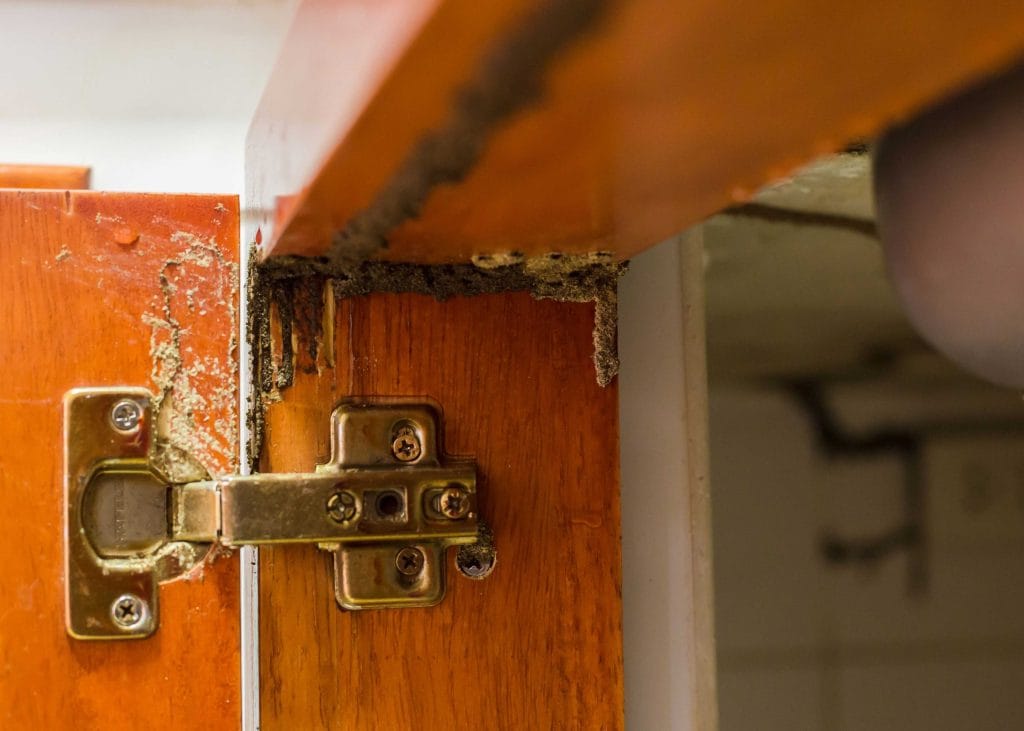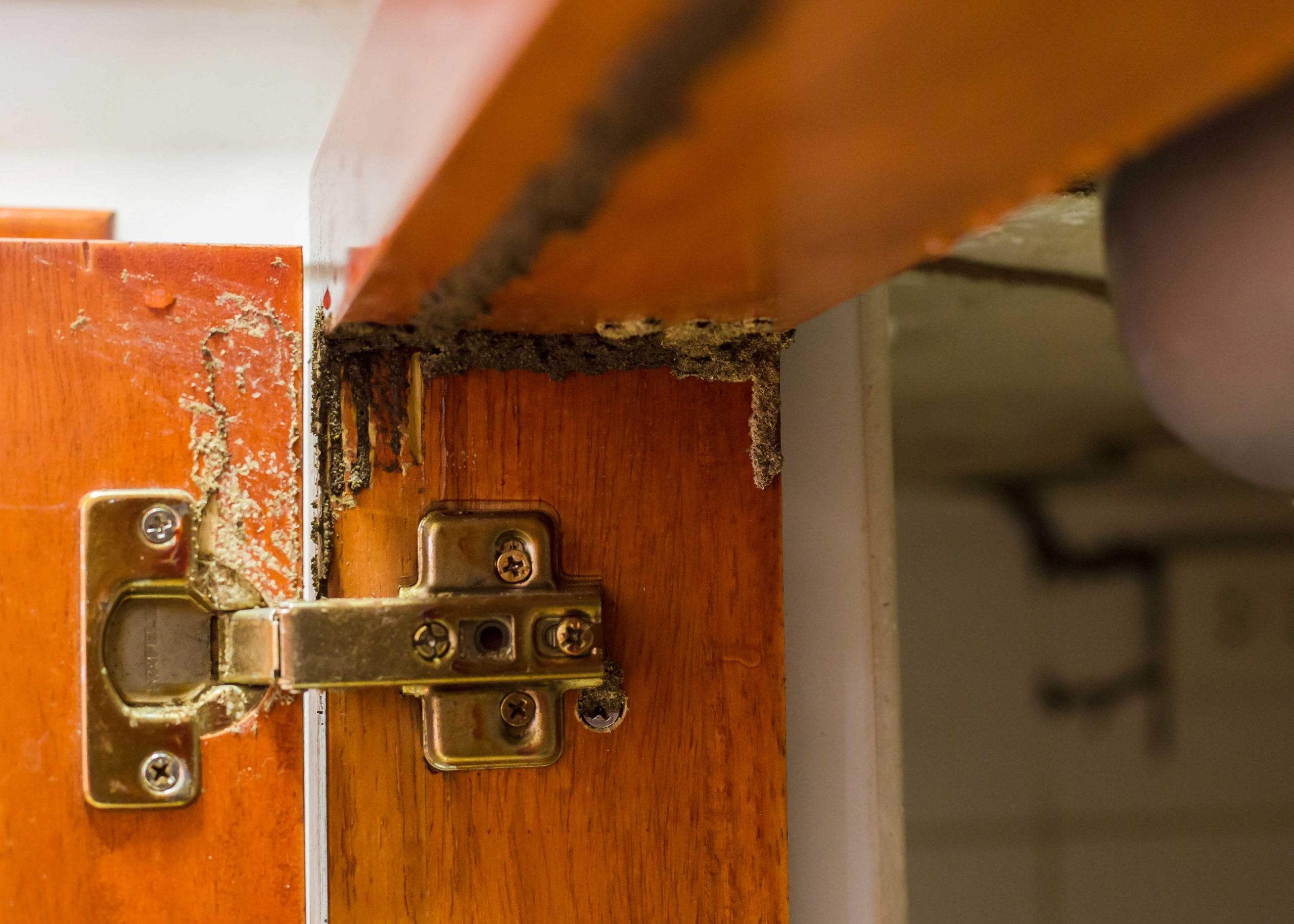Don't let termites destroy your home: protect it now with our expert help

Termites: A Comprehensive Guide to Identification, Prevention, and Treatment
Termites, often referred to as “silent destroyers,” are resilient and adaptable insects that can inflict catastrophic damage to structures and property if left unchecked. Understanding their biology, identifying their presence, and taking proactive measures is essential for effective termite management and prevention.
Biology and Characteristics of Termites
Termites are eusocial insects that live in colonies, similar to ants and bees. Each colony consists of various castes, including workers, soldiers, reproductives, and a queen. Termites are predominantly cellulose-feeders, meaning they obtain nutrition from wood and other plant-based materials. Their intricate social structure, coupled with their voracious appetites, makes them a formidable threat to wooden structures.
Identifying Termite Infestations
Early detection is paramount in termite management. There are several telltale signs that may indicate a termite infestation: *
Mud Tubes:
Termites often construct mud tubes to protect themselves from predators and environmental conditions while foraging for food. These tubes, resembling narrow tunnels, connect the colony to moisture sources and food sources. *
Hollowed Wood:
If you suspect termite activity, tap on wooden surfaces around your property. Hollowed or papery-sounding areas may indicate termite damage. *
Discarded Wings:
During swarming season, termites shed their wings after mating. The presence of discarded wings near windows, doors, or light fixtures is a clear indication of an infestation. *
Frass:
Termites produce small, wood-colored pellets as waste. These pellets, known as frass, can accumulate in small piles or be found along termite pathways.
Consequences of Termite Infestations
Termite infestations can have devastating consequences: *
Structural Damage:
Termites relentlessly consume wood, weakening and compromising the integrity of structures. This damage can lead to costly repairs and even endanger the safety of occupants. *
Financial Loss:
Termite damage can result in significant financial losses. Extensive repairs, property devaluation, and increased insurance premiums are common repercussions. *
Health Risks:
While termites do not pose a direct threat to human health, their presence can induce psychological distress and anxiety for homeowners.
Prevention and Treatment Strategies
Proactive measures are crucial for termite prevention and control: *
Moisture Control:
Termites thrive in moist environments. Eliminating moisture sources around your property, such as leaking pipes or damp crawl spaces, can discourage termite activity. *
Termite Barriers:
Chemical or physical barriers can be installed around the perimeter of a property to prevent termite entry. These barriers act as a deterrent, repelling termites and forcing them to seek alternative food sources. *
Regular Inspections:
Regular inspections by qualified pest control professionals can identify termite infestations at an early stage, enabling prompt treatment and minimizing damage. *
Chemical Treatments:
In cases of active termite infestations, chemical treatments may be necessary. Termiticides are applied to the soil around the property’s foundation, creating a protective zone that repels and eliminates termites.
DIY vs. Professional Termite Management
While DIY termite control methods exist, they are generally not recommended. Termite infestations can be complex and challenging to eradicate without professional expertise. Engaging a licensed and experienced pest control company ensures proper diagnosis, effective treatment, and long-term prevention strategies.
Conclusion
Termites pose a serious threat to structures and property, but proactive measures can mitigate their impact. Understanding termite biology, recognizing signs of infestation, and implementing preventive strategies are essential for effective termite management. When termite infestations occur, seeking professional assistance from qualified pest control companies is pivotal for successful treatment and protection against future infestations.

Termites Threaten Your Home: A Comprehensive Guide
Introduction
Termites, the silent invaders, dwell beneath the surface of your home, gnawing away at its wooden structure. Their presence is often unnoticed until the damage becomes catastrophic, jeopardizing the integrity and safety of your property. This comprehensive guide empowers you with the knowledge to recognize, prevent, and eradicate these destructive pests.
The Nature of Termites
Termites belong to the insect order Blattodea, which also includes cockroaches. They live in colonies that can number in the millions, with intricate social hierarchies and specialized roles.
Subterranean termites construct their colonies underground, connected to your home through mud tubes that provide access to food and water sources. Drywood termites, in contrast, establish their nests within the wood itself, often leaving no visible signs of infestation.
Signs of Termite Infestation
Detecting termite activity early is crucial for minimizing damage. Several telltale signs may indicate their presence:
- Mud Tubes: Subterranean termites erect earthen tubes along foundations, walls, and pipes to reach food sources.
- Discarded Wings: Swarmers, reproductive termites that establish new colonies, shed their wings after mating. These discarded wings can be found near windows, doors, and light fixtures.
- Buckling Floors: Extensive termite damage weakens floorboards, causing them to sag or buckle.
- Hollow Wood: As termites consume wood, it becomes hollow and easily crumbled when tapped.
- Tightening Doors and Windows: Warped wood due to termite damage can make doors and windows difficult to open and close.
- Frass: Termite feces, known as frass, resembles small, dark sawdust and can be found near termite activity.
Consequences of Termite Damage
Over time, termite infestations can cause significant structural damage, leading to costly repairs and potentially compromising the safety of your home. Their voracious appetite for wood can result in:
- Collapse of Buildings: Severe termite damage weakens load-bearing walls, ceilings, and floors, increasing the risk of catastrophic collapse.
- Roof Failure: Termites can weaken roof timbers, resulting in leaks, sagging, and potential collapse.
- Foundation Damage: Subterranean termites can damage wooden floor joists and beams that support the foundation, compromising the stability of your home.
- Increased Insurance Premiums: Termite damage can impact your home’s insurance coverage and lead to higher premiums.
Prevention and Control Measures
Taking proactive steps to prevent and control termite infestations is essential for protecting your home. Employ these measures to safeguard your property:
- Regular Inspections: Schedule annual inspections by licensed pest control professionals to detect termite activity early.
- Moisture Control: Termites thrive in moist environments. Repair leaky pipes, gutters, and downspouts to minimize moisture around your home.
- Wood Treatment: Consider applying chemical treatments to wood surfaces, such as pressure-treated lumber or borax-based solutions, to deter termites.
- Physical Barriers: Install termite shields around foundations and in crawl spaces to prevent subterranean termites from entering your home.
- Baits: Sentricon® and other bait systems consist of bait stations that attract and kill termites, effectively eradicating colonies over time.
Professional Termite Services
If you suspect or discover termite activity in your home, it is imperative to seek professional assistance immediately. Experienced termite exterminators utilize advanced techniques and products to eliminate infestations effectively:
- Comprehensive Inspections: Trained professionals thoroughly inspect your property to identify areas of infestation and assess the extent of damage.
- Targeted Treatment Plans: Based on the inspection findings, a customized treatment plan is developed to eradicate the termite colony and prevent future infestations.
- Termite Extermination: Professional exterminators employ various methods, such as chemical treatments, heat treatments, or fumigation, to eliminate termites.
- Monitoring and Prevention: After treatment, ongoing monitoring and follow-up services ensure that your home remains protected from future termite invasions.
Conclusion
Protecting your home from termites requires vigilance, prevention, and professional expertise. By recognizing the signs of termite infestation, taking proactive measures, and seeking professional assistance when necessary, you can safeguard your property against these destructive pests. Remember, early detection and prompt action are critical to minimizing damage and ensuring the safety and integrity of your home.

Termites: Everything You Need to Know
Termites are wood-destroying insects that can cause significant damage to buildings and other wooden structures. They are often referred to as “silent destroyers” because they can infest a structure for years without being detected, all the while causing extensive damage.
Understanding Termites
Termites are social insects that live in colonies with well-defined roles for each member. The colony is typically led by a queen who lays the eggs, and also includes workers, soldiers, and reproductive termites. Termites feed primarily on cellulose, which is found in wood and other plant materials.
Types of Termites
There are several different species of termites, each with its own characteristics and preferred habitats. Some of the most common types of termites in the United States include:
- Subterranean Termites: These are the most common type of termite in the U.S., and they live in underground colonies. Subterranean termites build mud tubes to travel between their colony and food sources, and they can infest buildings through cracks in the foundation or other openings.
- Drywood Termites: Drywood termites do not require contact with the ground, and they can infest dry wood in buildings and other structures. They typically infest furniture, flooring, and other wooden components.
- Dampwood Termites: Dampwood termites prefer damp wood, and they are often found in areas with high humidity. They can infest wood that is in contact with the ground or that has been exposed to water damage.
- Formosan Termites: Formosan termites are a particularly aggressive species that can cause extensive damage to buildings and other structures. They are native to Asia, but have been introduced to the U.S. in recent years.
Signs of a Termite Infestation
Termite infestations can be difficult to detect, but there are a few signs that may indicate a problem:
- Mud tubes: Subterranean termites often build mud tubes to travel between their colony and food sources. These tubes may be visible on the foundation of a building, on the ground, or inside walls.
- Wood damage: Termites eat wood from the inside out, so the surface of infested wood may appear undamaged. However, you may notice small holes in the wood, or the wood may sound hollow when tapped.
- Frass: Termites produce small, sawdust-like droppings called frass. Frass may be visible on the ground, on windowsills, or in other areas where termites have been active.
- Winged termites: Swarmers are winged termites that leave the colony to mate and establish new colonies. If you see winged termites in or around your home, it may be a sign of an infestation.
Preventing Termite Damage
There are a number of things you can do to prevent termite damage to your home or other buildings:
- Eliminate moisture: Termites are attracted to damp wood, so it is important to eliminate moisture sources around your home. This includes fixing leaky faucets, repairing damaged gutters, and sealing cracks in the foundation.
- Keep wood away from the ground: Termites can easily enter buildings through wood that is in contact with the ground. To prevent this, keep firewood, mulch, and other wood materials away from the foundation of your home.
- Inspect your home regularly: Regularly inspect your home for signs of termite damage, such as mud tubes, wood damage, or frass. If you find any signs of termites, contact a professional pest control company immediately.
Termite Control
If you suspect that your home or other building has a termite infestation, it is important to contact a professional pest control company immediately. Termite control can be a challenging process, but it is important to take action as soon as possible to prevent further damage. There are a variety of termite control methods that can be used, depending on the type of termite infestation and the extent of the damage. Some of the most common methods include:
- Chemical treatments: Chemical treatments involve applying pesticides to the soil around the foundation of your home or other building. These pesticides create a barrier that prevents termites from entering the structure.
- Baiting systems: Baiting systems involve placing small stations around your property that contain termite bait. The bait attracts termites, which then transport it back to their colony, where it kills the queen and other members of the colony.
- Physical barriers: Physical barriers, such as termite shields and mesh screens, can be installed to prevent termites from entering a building. These barriers can be effective, but they must be properly installed and maintained.
Conclusion
Termites can be a serious problem for homeowners and other property owners. However, by understanding termite biology, signs of infestation, and prevention methods, you can protect your property from these destructive pests. If you suspect that your home or other building has a termite infestation, it is important to contact a professional pest control company immediately.
Get Your Local EstimateNeed a quick termite removal estimate?
1. Call our team or complete our estimate form to schedule a termite inspection.
Our calls and form completions are completely free to you. You will only be charged if you decide to work with one of our professional pest control service experts. Our Brunswick termite removal contractors have years of experience and are knowledgeable in identifying and treating termite infestations. You can feel confident that your home will be in great hands with one of our network professionals.
2. Connect with a local Brunswick termite removal expert.
Completing our form is a great option if you’re busy and want someone to get back to you at a later time. A call will connect you with a termite removal professional quicker. Receive your competitive estimate; often, you can receive an estimate right on the phone call, and sometimes a little more discovery is involved, and the termite removal expert might want to do some basic inspections before giving the estimate.
Find Brunswick termite removal experts near you
It’s essential to make termite removal a priority. Protect your home from the devastating effects of termites with professional termite removal services in Brunswick. Termites can cause extensive damage to your home’s structural integrity, leading to costly repairs and maintenance in the future. Regular termite inspections and treatments are necessary to prevent and eliminate termite infestations. Our network of professional pest control experts in Brunswick offer comprehensive termite removal options, from inspections to soil treatments, bait stations, fumigation, and preventative measures. Our experienced and knowledgeable team will diagnose any potential termite issues before they become major problems, which can save you money in the long run. Don’t wait until it’s too late to protect your home from termites. Contact our team now to schedule a termite inspection and take the necessary steps to prevent and eliminate termite infestations. With our quality service and competitive prices, you can trust that your home is in good hands. Protect your home and your investment with professional termite removal services in Brunswick.
